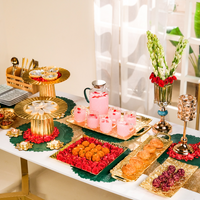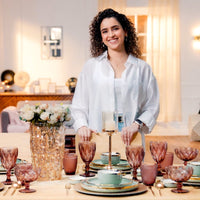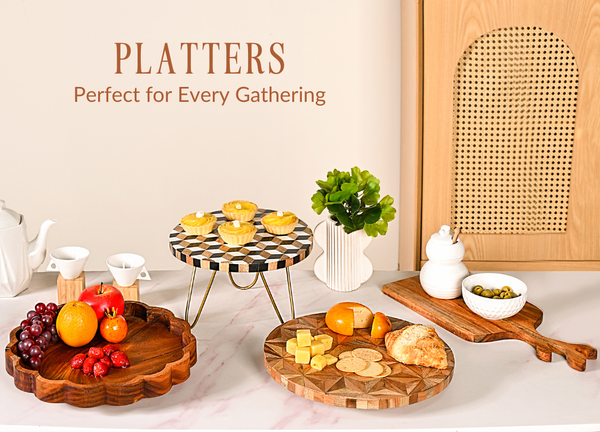When we think of a kid’s bedroom, the things that come to mind are bright colours, a wall full of 3D stickers, and everything in disarray. While this works for the majority, there are a few special children for whom functionality takes precedence over all. Designing comfortable and inclusive spaces for children with special needs is no easy task, so we’re here to walk every step of this journey with you. Sharing expert tips from professional designers, we hope to help parents curate a warm and welcoming space for their little ones.
Being sensitive to how each disorder uniquely affects a child, we’ve assorted special tips based on the same.
Common Disabilities In Children & Home Decor Tips To Address Them
1. Autism
i. Controlled Lighting
We are no strangers to the fact that children with Autism are constantly overstimulated by their surroundings. The wrong lighting conditions can be quite detrimental to your child’s mental health and development. White light with high strobing frequencies is a strict no, causing headaches, stimming, and erratic behaviour. Instead, LED lights with minimal flicker and a high Colour Rendering Index (CRI) are considered ideal for children with autism.
Natural light has some proven benefits when it comes to autistic children. However, this light should always be filtered to reduce its harshness. We suggest a combination of blackout curtains and blinds to alleviate the effects of blaring sunlight directly entering the room.
ii. Less Visual Clutter
When it comes to curating a space for autistic children, the more minimal the better. This will help your child stay focused and significantly reduce sensory overload. Invest in quality storage baskets and efficient storage units to keep all essentials organised.

iii. Acoustic Treatment
Now that we’ve taken care of visual stimuli, let’s talk sounds. Children who are greatly into the spectrum are quite sensitive to sounds. This makes the acoustical treatment of your home a must. Install rugs or carpeting in high-traffic areas such as the living room or nursery to dampen unwanted noise. Double-pane windows and solid-core doors are also perfect for blocking out sounds from many areas.
iv. Soothing Colours
While bright colours are cheery and refreshing for us, it’s not the case for children with autism. Having an extremely sensitive perception of visual, auditory, and tactile stimuli, bold colours can be quite jarring for them. It is important to steer clear of yellows, reds, and oranges. Instead, go for toned-down colours that are easy on the eyes. Pastel blues and greens are quite calming and reminiscent of nature. A pretty lilac or soft pink also works well, creating a warm yet gentle backdrop for your child to thrive in.

v. Comfy Bedding
When it comes to caring for a child with autism, it’s often the little details that count. While curating a home for children with autism, it is important not to overlook tactile considerations. Cotton bed covers with a high thread count are crisp and do not create bumps and lumps. This ensures a plain and even surface for your child to comfortably sleep in. Weighted blankets also feel quite snug, akin to a warm hug from you. Also, look for comfortable solid throw pillows.
vi. Separate Zones
Create separate zones in your child’s room and assign each one to a particular activity. For instance, there should be an organised study area, a designated playroom, and a comfortable place to sleep. This helps them focus on a particular task better instead of getting overwhelmed by everything all at once.

2. Attention-Deficit Hyperactivity Disorder (ADHD)
i. Colour Code Items
A visually organised environment helps reduce distractions, improving their ability to fixate and focus their attention on just a few things at a time. There are some pretty clever ways you can do this. One of them is by incorporating a reward system. You can colour code cookie jars by type: applying brown stickers for chocolate chip cookies, red stickers for red velvet cookies, and beige ones for classic butter cookies. This will be a fun and interactive way for them to hone their organisational skills.
ii. When In Doubt, Throw It Out!
Off-season clothes, old toys, and tattered school projects - get rid of all items that are in disarray. A cluttered environment can make it incredibly hard for your child to focus, only adding fuel to the fire. Given the level of baseline distraction in children with ADHD, a chaotic environment will make it quite challenging for them to get simple tasks done. The solution to this? Built-in storage units and plenty of baskets are key to having your home spick and span at all times.

iii. Multipurpose Function
The one thing that needs to be offered to neurodivergent children is choice. A great way to incorporate this into your home is through multipurpose furniture. Beds with integrated storage units and study desks with multiple drawers are all great options when seeking furniture for your kid.

iv. Provide Sensory-Friendly Elements
Promoting comfort is key when it comes to creating a safe and inviting environment for your child. Think of all the things that provide tactile pleasure such as a soft blanket, a nice bean bag that feels great to sink into, and more. These little changes can have a significant impact on your child’s well-being.
v. Create A Comforting Corner
Sometimes all we need is a little break. This applies highly to all neurodivergent children, especially those with ADHD. A cosy reading nook with warm dimmable lights, organised floating shelves, and adorable plush toys is a great way for you to bond with your child and give their busy brains a rest from all the internal commotion.
3. Cerebral Palsy
i. Accessible Design
For children with cerebral palsy, mobility and range of motion are quite challenging. This is one of the reasons why there needs to be some major modifications in terms of design. For starters, wide entryways are a must. Install sliding windows as they are easier to open and close. Light switches, electrical sockets, and other frequently used appliances should also be placed within reach. Eliminate steps and switch them with ramps in cases where they aren’t necessary.

ii. Grab Bars
Providing stability and support to children with cerebral palsy is an all-time necessity. Grab bars embedded into walls make it easier for the child to switch different positions and to stand, walk, and perform other tasks with ease. It also lowers the risk of accidental falls and damage.
iii. Height Adjusted Handles
It is also important to strategically position levers and handles that are easy to access for your child from a seated or standing position. Bid farewell to pull-out shelves and drawers and go for those with levers so they can pry them open easily. It is also necessary to ensure that there’s ample space around handles and levers so they can grasp and operate them without breaking a sweat.
iv. Modified Flooring
A common oversight when it comes to designing a home for children with cerebral palsy is revamping the flooring. Vinyl plank flooring is not only waterproof and scratch-resistant, but also withstands impact from wheels. There’s another plus! Compared to tiles and hardwood flooring, vinyl plank is relatively slip-resistant. This lowers the chances of slips and falls.
v. Ramps
Lastly, ramps are a lifesaver when it comes to children with cerebral palsy. They will allow you to safely roll them up and down, making entry and exit simple and hassle-free.

Most of these tips heavily apply to children with Down Syndrome as well. So that’s something to keep in mind.
Conclusion
Parenthood is one of life’s greatest gifts. Even in the face of insurmountable odds, we’re sure you only want what’s best for your child. A well-designed home is a necessity when it comes to nurturing children with special needs. With this pressing issue in mind, we’ve assembled a list of ideas to create a comfortable and inviting environment for them to thrive. From accessible features to soothing colours, we’ve included everything you need to know. We hope you come up with something great for your kid.





















